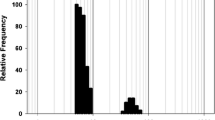Abstract
Nanomaterials are at the leading edge of the rapidly developing field of nanotechnology. The use of nanoparticles as drug delivery vehicles for anticancer therapeutics has great potential to revolutionize the future of cancer therapy. The present paper concerns both the optimizations of anticancer drug loading and its release from polymeric nanoparticles. The major aim of this study was to design poly (HEMA) nanoparticles as swelling controlled drug release system for anticancer drug. The prepared nanoparticles were characterized by Infra-Red (IR) Spectra, Particle size Analysis, and Scanning Electron Microscopy (SEM). The nanoparticles were loaded with widely used anticancer drug, 5-Fluorouracil, and controlled release of drug was investigated to observe the effects of various parameters such as percent loading of the drug, chemical architecture of the nanocarriers, pH, temperature, and nature of release media on the release profiles. The chemical stability of 5-Fluorouracil (5-FU) was also tested in phosphate buffer saline (PBS) (pH = 7.4) and release was studied in various simulated biological fluids. The prepared nanoparticles could provide a possible pathway for controlled and targeted delivery of anticancer drug, thus causing lower side effects and higher efficacy.












Similar content being viewed by others
References
C.R. Dass, P.F.M. Choong, Cancer Cell. Int. 6, 17 (2006). doi:10.1186/1475-2867-6-17
D. Paolino, M. Fresta, P. Sinha, M. Ferrari, Encyclopedia of Medical Devices and Instrumentation, 2nd edn (2006)
C.R. Dass, M.A. Burton, Cancer Biother. Radiopharm. 17, 501–505 (2002). doi:10.1089/108497802760804727
J.W. Park, C.C. Benz, F. Martin, Semin. Oncol. 31(6 suppl 13), 196–205 (2004)
D.A. LaVan, T. McGuire, R. Langer, Nat. Biotechnol. 21(10), 1184–1191 (2003)
R. Langer, N.A. Peppas, AICHE 49, 12 (2003). doi:10.1002/aic.690491202
L.G. Griffith, Acta Mater. 48, 263–277 (2000). doi:10.1016/S1359-6454(99)00299-2
M.N.V. Ravi Kumar, J. Pharm. Pharmceut. Sci. 3(2), 234–258 (2000)
H.M. Redhead, S.S. Davis, L. Illum, J. Control Release 70, 353–363 (2001). doi:10.1016/S0168-3659(00)00367-9
G. Barrat, Cell Mol. Life Sci. 60, 21–37 (2003). doi:10.1007/s000180300002
A.K. Bajpai, J. Choubey, J. Mater. Sci. Mater. Med. 17, 345–358 (2006). doi:10.1007/s10856-006-8235-9
I. Brigger, C. Dubernet, P. Couvreur, Adv. Drug Deliv. Rev. 54(5), 631–651 (2002). doi:10.1016/S0169-409X(02)00044-3
M.L. Hans, M.A. Lowman, Curr. Opin. Solid State Mater. Sci. 6(4), 319 (2002). doi:10.1016/S1359-0286(02)00117-1
J. Panyam, V. Labhasetwar, Adv. Drug Deliv. Rev. 55(3), 329 (2003). doi:10.1016/S0169-409X(02)00228-4
H. Maeda, J. Wu, T. Sawa, Y. Matsumura, K. Hori, J. Control Release 65, 279–284 (2002)
J. Kaul, M. Amiji, Pharm. Res. 19(7), 1061–1067 (2002). doi:10.1023/A:1016486910719
L. Brannon-Peppas, J. Blanchette, Adv. Drug Deliv. Rev. 56, 1649–1659 (2004). doi:10.1016/j.addr.2004.02.014
P.C. Nicolson, J. Vogt, Biomaterials 22, 3273–3283 (2001). doi:10.1016/S0142-9612(01)00165-X
L. Flynn, P.D. Dalton, M.S. Shoichet, Biomaterials 24, 4265–4272 (2003). doi:10.1016/S0142-9612(03)00334-X
Y.W. Yang, J.S. Lee, I. Kim, Y.J. Jung, Y.M. Kim, Eur. J. Pharm. Biopharm. 66, 260–267 (2006)
J.L. Grem, D. Nguyen, B.P. Monahem, V. Kao, F.J. Geoffrey, Biochem. Pharmacol. 58, 477–486 (1999). doi:10.1016/S0006-2952(99)00099-4
F. Puoci, F. Iemma, G. Cirillo, N. Picci, P. Matricardi, F. Alhaique, Molecules 12, 805–814 (2007). doi:10.3390/12040805
Z. Hilt, M.E. Byrne, Adv. Drug Deliv. Rev. 56, 1599–1620 (2004). doi:10.1016/j.addr.2004.04.002
R.H. Parikh, J.R. Parikh, R.R. Dubey, H.N. Soni, K.A. Kapadia, AAPS PharmSciTech. 4(2), 13 (2003). doi:10.1208/pt040213
C. Kiparissides, S. Alexandridou, O. Kammona, E. Dini, Workshop of CPERI (2002)
P. Couvreur, G. Barratt, E. Fattal, P. Legrand, C. Vauthier, Crit. Rev. Ther. Drug Carrier Syst. 19, 99–134 (2002). doi:10.1615/CritRevTherDrugCarrierSyst.v19.i2.10
E. Karadag, D. Saraydin, Turk. J. Chem. 26, 863–875 (2002)
A.K. Bajpai, S. Shukla, J. Bajpai, J. Macromol. Res. 11, 273 (2003)
V.J. Mohanraj, Y. Chen, Trop. J. Pharm. Res. 5(1), 561–573 (2006)
L.F. Wang, W.B. Chen, Y.B. Chen, S.C. Lu, J. Biomater. Sci. Polym. Ed. 14(1), 27 (2003). doi:10.1163/15685620360511128
G. Oberdoster, Z. Sharp, V. Atudorie, A.C.P. Elder, R. Gelin, A. Lunts, W. Krefing, C. Cox, J. Toxicol. Environ. Health 65A, 1531–1543 (2002)
A.K. Bajpai, M. Rajpoot, J. Appl. Poym. Sci. 81, 1238–1247 (2000). doi:10.1002/app.1546
M.V. Risbud, A.A. Hardikar, S.V. Bhat, R.R. Bhonde, J. Control Release 68, 23–30 (2000). doi:10.1016/S0168-3659(00)00208-X
A.K. Bajpai, J. Mater. Sci. Mater. Med. 15, 583–592 (2004). doi:10.1023/B:JMSM.0000026380.40151.28
A.K. Bajpai, Smitha Bhanu, J. Mater. Sci. Mater. Med. 18, 1613–1621 (2007). doi:10.1007/s10856-007-3020-y
A.K. Bajpai, Abhilasha Mishra, Polym. Int. 54, 1347–1356 (2005). doi:10.1002/pi.1839
B. Tahar, M. Bêoukhel, C. Cadric, R. Jerome, Acta Pharm. 57, 301–314 (2007). doi:10.2478/v10007-007-0024-6
A.K. Bajpai, Rajesh Saini, Polym. Int. 54(5), 796–806 (2005). doi:10.1002/pi.1773
Author information
Authors and Affiliations
Corresponding author
Rights and permissions
About this article
Cite this article
Chouhan, R., Bajpai, A.K. An in vitro release study of 5-fluoro-uracil (5-FU) from swellable poly-(2-hydroxyethyl methacrylate) (PHEMA) nanoparticles. J Mater Sci: Mater Med 20, 1103–1114 (2009). https://doi.org/10.1007/s10856-008-3677-x
Received:
Accepted:
Published:
Issue Date:
DOI: https://doi.org/10.1007/s10856-008-3677-x




